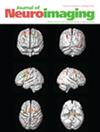Association of Spinal Cord Radiomic Features and Disability in Multiple Sclerosis
Abstract
Background and Purpose
Spinal cord pathology underpins disability accumulation in people with multiple sclerosis (pwMS). Visual inspection of spinal cord magentic resonance imaging (MRI) often fails to reliably detect injury. Radiomics analyzes signal intensities in images to identify pathological changes that may be imperceptible to the human eye. This study evaluated the application of radiomics to spinal cord MRI to distinguish subgroups of pwMS and disability correlations.
Methods
Radiomic features were extracted from upper cervical cord coverage on cross-sectional 3.0T brain noncontrasted T1-weighted MRI scans in pwMS and healthy controls (HCs). Ninety-three radiomic features—predominantly gray-level matrices—were extracted using Pyradiomics, with pixel heterogeneity considered to reflect neuroaxonal pathology. T2 lesion and brain substructure volumes were segmented from 3D fluid-attenuated inversion recovery and magnetization-prepared rapid gradient-echo sequences using an in-house 2.5D U-Net convolutional neural network to encapsulate neuroinflammation and neurodegeneration. Cervical cross-sectional area (C1−C3) was measured using in-house atlas-based segmentation. Imaging features were compared between pwMS and HCs, and pwMS by phenotype (relapsing vs. progressive), age, and race. Associations of imaging features with Patient-Determined Disease Steps (PDDS) were examined.
Results
Among 2966 pwMS and 41 HCs, we identified radiomic features distinguishing pwMS from HCs, and pwMS by phenotype, age, and race. Radiomic features exhibited stronger correlations with PDDS than conventional MRI measures.
Conclusions
Radiomics identified pathological changes in pwMS in varying stages of the disease course that are undetectable by conventional spinal cord MRI. Radiomics may increase the yield of spinal cord MRI in pwMS and serve as biomarkers predicting disability worsening.


 求助内容:
求助内容: 应助结果提醒方式:
应助结果提醒方式:


